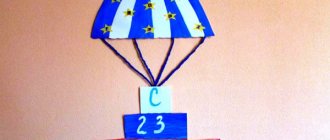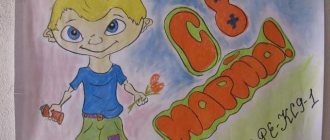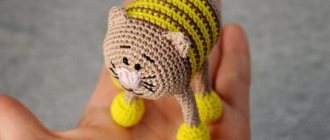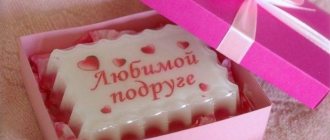Wall newspaper for May 9
Some interesting events of the Second World War
The Second World War (hereinafter referred to as the war) began on September 1, 1939 and lasted until September 2, 1945 and was fought on the territory of 40 states. 61 countries took part in the hostilities and 60 million people died in this bloodthirsty war. During the 6 years of hostilities, a lot of interesting events took place, which most likely almost no one knows about.
1. At the beginning of World War II, the USSR simply did not have enough tanks, so the leadership decided in special cases to take the enemy’s bluff and “turn” ordinary tractors into tanks. Such a special incident occurred during the defense of Odessa from Romanian units. The tanks were lined with sheets of metal and launched into battle at night to the sound of a siren. Out of fear, the Romanians fled. For this he was nicknamed Ni-1 (For fear)
2. An interesting incident occurred in 1943 at the Battle of Kursk. 1,000 of our and enemy planes flew in the sky and fought. In one of these battles, 4 German Bf-109 fighters met an Il-2 attack aircraft in the sky, nicknamed the “Black Death” by the Germans. All the German fighters took turns firing a series of rounds at the tail of the Il-2, but the attack aircraft flew as if nothing had happened. The German flight commander asked the pilot why the attack aircraft did not fall, to which the pilot replied: “Mr. Colonel, you can’t bite a hedgehog in the ass!”
3. An interesting incident occurred during the American landing on the Mariana Islands in June 1944. Only the launched Japanese aircraft carrier Taiho rushed to the aid of the allies. The American submarine Albacore decided to rush across the aircraft carrier and, upon reaching attack range, fired 2 torpedoes. The Taiho launched fighters from the ship to attack from the air. Seeing the torpedo, one of the Japanese pilots rushed at it and thereby stopped it. but this did not save the pride of the imperial Taiho fleet, because the second torpedo blew up the aircraft carrier on the first strike, which happens extremely rarely.
4. An interesting situation occurred with the heroic blockade of Leningrad. Indeed, in September 1941, German troops under the command of Wilhelm von Leeb advanced on Leningrad, overcoming the resistance of Soviet troops. On September 15, the Germans captured Uritsk and were ready to take Leningrad with a powerful attack.
But help for our heroic city came not from our fronts, but from Hitler himself, because he ordered von Leeb to remove the 41st Panzer and 8th Air Corps from the front, which were the main power of the army on this front, Hitler decided to starve the city to death, but that was not the case, and in January 1944 the Germans were thrown back from the city many kilometers ago.
5. After the end of the war, Stalin reported that about 7 million people died at the front; in fact, this figure was made up, since no one wanted to count the dead. And only with the arrival of Khrushchev the death toll increased to 30 million. But in fact, the total loss of the USSR in the war was about 43 million, of which about 26 million were soldiers.
Why was one dog carried in the arms of a Stalinist overcoat at the Victory Parade on June 24, 1945? During World War II, trained dogs actively helped sappers clear mines. One of them, nicknamed Dzhulbars, discovered 7,468 mines and more than 150 shells while clearing mines in European countries in the last year of the war.
Shortly before the Victory Parade in Moscow on June 24, Dzhulbars was injured and could not participate in the military dog school. Then Stalin ordered the dog to be carried across Red Square on his overcoat. Already 70 years have passed since the Great Victory over the Nazis in World War II.
The war, which lasted from 1939 to 1945, claimed millions of lives, but still ended in victory (naturally thanks to the Soviet people)
During the Great Patriotic War, about sixty thousand dogs were drafted into the army, not only shepherd dogs, but also other breeds, including large mongrels. Of these, 168 units were formed.
Dogs at the front were used for a variety of purposes. First of all, they served both as guards and as combat guards. Dogs were often used in ambushes and secrets.
There were also special dogs trained to search for the hiding places of enemy snipers, ambulance dogs, and signal dogs.
- Dogs at war.
- How many words have been said, Maybe someone's muse is tired Talking about the war And disturbing soldiers' dreams It just seems to me Little has been written to offend About the dogs - fighters Who protected us during the war. Nicknames have been erased from memory Now I can't even remember the face We, who came later, know nothing at all Only the gray-haired veteran Still remembers the dog sled that dragged him to the medical battalion
- From the battlefield once it.
S. Eroshenko.
Sled dogs and ambulance dogs. The ambulance dogs found our wounded soldiers in the forests and swamps and brought medical help to them. In addition, they carried small backpacks with all the necessary medications needed to provide first aid.
During the Great Patriotic War, ambulance dogs pulled more than 700 thousand wounded soldiers from the battlefield.
In total, during the hostilities, about 15 thousand dog sleds were formed, which delivered wounded soldiers to shelter, where they could be provided with urgent medical care.
In winter, on sledges and in summer, on special carts, under fire and explosions, about 700 thousand seriously wounded were taken from the battlefield, and 3,500 tons of ammunition were transported to combat units.
Mine detection dogs.
Mine detection dogs - there were about 6 thousand of them - were discovered, and sapper leaders neutralized 4 million mines, landmines and other explosives. The Leningrad collie Dick is famous. In his personal file it is written: “Called up for service from Leningrad and trained in mine detection.
During the war years, he discovered more than 12 thousand mines, took part in demining Stalingrad, Lisichansk, Prague and other cities. Dick accomplished his main feat in Pavlovsk.” It was like that. An hour before the explosion, Dick discovered a two and a half ton landmine with a clock mechanism in the foundation of the palace.
After the Great Victory, the legendary dog, despite multiple wounds, was a repeated winner of dog shows. The veteran dog lived to a ripe old age and was buried with military honors, as befits a hero.
Communication dogs.
Communication dogs - in difficult combat situations, sometimes in places impassable for humans, delivered over 120 thousand combat reports; to establish communications, they laid 8 thousand km of telephone wire (for comparison: the distance from Berlin to New York is 6,500 km).
Sometimes even a seriously wounded dog crawled to its destination and completed its combat mission. The German sniper shot out both ears of the messenger dog Alma with the first shot, and shattered the jaw with the second. And yet Alma delivered the package. The famous dog Mink for 1942-1943. delivered 2,398 combat reports. Another legendary dog, Rex, delivered 1649 reports.
He was wounded several times, crossed the Dnieper three times, but always reached his post.
Dogs are tank destroyers.
Dogs are tank destroyers. Not the most pleasant dog profession that appeared during the war. These dogs were trained for one and only task in their lives - blowing up enemy tanks.
To do this, they were trained not to be afraid to crawl under moving tanks. Before the mission, they were wearing special bags with mines. And as soon as the dog was under the armored vehicles, the mine exploded. About 300 enemy tanks were destroyed in this way during the war.
From the report of the commander of the 30th Army, Lieutenant General Lelyushenko, dated March 14, 1942: “During the defeat of the Germans near Moscow, the enemy tanks launched into the attack were put to flight by the dogs of the destruction battalion.
The enemy is afraid of anti-tank dogs and specifically hunts for them.”
The German shepherd Dzhulbars was a participant in the Great Patriotic War. He served in the 14th assault engineer brigade. The only dog awarded the medal "For Military Merit".
Thanks to his excellent instincts, 7,468 mines and more than 150 shells were cleared in Czechoslovakia, Austria, Romania and Hungary (from September 1944 to August 1945).
He also participated in clearing mines from the palaces above the Danube, the cathedrals of Vienna and the castles of Prague.
At the historical Victory Parade on July 24, 1945, all fronts of the Great Patriotic War and all branches of the military were represented.
But not everyone knows that at that parade, following the combined regiments of the fronts, the Navy regiment and columns of military equipment, dogs walked along Red Square with their handlers. At that historical parade, the country’s chief dog handler, Lieutenant Colonel Mazower, walked behind the “box” of soldiers with dogs.
He was allowed not to mark a step and not to salute the commander-in-chief, since he was carrying in his arms a soldier of the 14th assault engineer brigade - a dog named Dzhulbars.
Dogs walked with man, side by side, and in difficult times they came forward. They shared a trench and rations with a man. They worked and died instead of people. In gratitude for their feat, monuments were erected to the dogs. On May 28, 2011, in Volgograd, on Chekistov Square, a monument to the demolition dogs who defended Stalingrad during the Great Patriotic War was unveiled.
A unique monument to 150 border dogs who “torn” an entire regiment of fascists in hand-to-hand combat. This battle, the only one in the history of world wars and conflicts, between people and dogs took place in the very center of Ukraine many years ago.
- A monument to a front-line dog was unveiled on Poklonnaya Hill in Moscow.
Source: https://infourok.ru/stengazeta-na-maya-1410805.html
How to draw a wall newspaper poster for May 9th yourself, templates?
On May 9 , it will be relevant to create a wall newspaper at school on the topic “ Victory Day ”.
Students, by drawing and creating themes for the wall newspaper, will understand even more the value and importance of Victory in the Second World War, which came with losses, exhaustion, trials, losses. The heroes of that war gave their lives so that we could now breathe freely, admire the sun and sky.
Years later, the event is somewhat erased from memory, because there are fewer and fewer living eyewitnesses - veterans, home front workers. Moreover, it will be useful for schoolchildren to create a wall newspaper on their own and reconstruct the events of those years in order to know the heroes and understand how important peace is.
What can you take as a basis and with what images can you use templates?
These are the options that are perfect for a wall newspaper.
✓ Heading at the top of the wall newspaper (“Victory in 1945”, “Great Victory”, “Feat of Heroes in the Second World War”, etc.
) + St. George's ribbon on the left (pasted from applique / natural rep / hand-drawn with pencils and paints) + poems + drawings (“carnation”, “carnation pigeon”, “army star with five points and sides”, “dove with a twig”, “ dove of peace”, “eternal flame”, below there is a thank you inscription “We remember!”, “Thank you for peace!”, etc.
✓ Heading + St. George's ribbon + newspaper clippings (drawn or scanned) + poems + drawings + inscription “1941 - 1945.”
✓ Title + St. George's ribbon + a story in your own words about the war or an excerpt from an essay + a thank you note + drawings.
✓ The inscription "1941 - 1945" instead of a title + photographs of front-line soldiers + painted flowers + St. George's ribbon, etc.
Templates:
- More templates:
- Step-by-step drawing with fireworks for a template on a wall newspaper:
Source: https://www.bolshoyvopros.ru/questions/1871875-kak-narisovat-stengazetuplakat-k-9-maja-samostojatelno-shablony.html
How to draw a poster for May 9th for school with your own hands step by step - master class, photo
On the eve of Victory Day, many educational institutions hold ceremonial events dedicated to the memory of all those who bravely fought for peace at the cost of their lives. Thus, primary school students take part in the design of a bright wall newspaper, a poster - with photographs, newspaper clippings, notes about warriors, hero cities, and thematic drawings. How to draw a poster for May 9, 2021 for school with your own hands? We offer you to master a simple master class with step-by-step photos of a bright poster in honor of the great Victory Day.
What materials are needed for a school poster for Victory Day on May 9:
- large sheet of whatman paper (A1 format)
- sheets of paper (A4 format)
- colored paper (black, orange)
- orange gouache
- black marker
- black tea (bags)
- scissors, ruler, pencil, brush
- glue
Do-it-yourself step-by-step design of a poster for school in honor of May 9, photo:
- First, let's make a frame for the future poster. Black and orange paper should be cut into thin strips (0.5 cm wide).
- Glue the cut colored strips, alternating, along the edge of a sheet of Whatman paper - you get a St. George’s ribbon. Be sure to leave some space at the top to place your title.
- We draw a beautiful title on the chosen topic with a simple pencil and color it with orange gouache. We outline the contours of each letter with a black marker to give the inscription expressiveness.
- Now let's take care of filling the poster. In our case, the main theme is hero cities - you will need to prepare in advance and print out materials (photos and texts) on sheets of paper.
- For greater effect, each leaf can be given an “old” look. We tear off the edges of the sheets a little so that they turn out “carelessly” uneven - of course, the text should not be damaged.
- We crumple the sheets with our hands.
- Immediately smooth it out on a flat surface.
- We dip each sheet in strong tea leaves, after 15 minutes we take it out and dry it with an iron. Such a tea “bath” will artificially “age” the paper.
- We glue the colored leaves to the Whatman paper in any order - as your imagination dictates. When composing the composition, we make sure that the text on the sheets can be read freely.
- As decoration, you can use images of orders, stars and other attributes - we place the pictures on the free areas of the poster.
- Such a wonderful poster for Victory Day 2021 can easily be made by elementary school students, surprising and delighting their parents with the fruits of their creativity.
The best ideas for a script for May 9, dedicated to Victory Day
On the eve of May 9, anti-war rallies, demonstrations, and concerts in honor of the Victory are held everywhere. War veterans take part in rallies and recall episodes related to hostilities. Children meet veterans, give them flowers, and organize holiday concerts. A script is written for each of these festive events.
It uses famous songs dedicated to the victory over fascism, poems written by war poets and about the war. Writing a script for the May 9 holiday is quite difficult if you expect to have a large audience and a concert lasting several hours. It’s a little easier to create a children’s script for Victory Day.
In our article you will find many original ideas, with their help you will create an excellent concert program.
Children's theatrical script for May 9
Since May 9 is a day off, rallies and concerts dedicated to the Great Victory take place the day before. Typically these events are held from May 5th to 8th.
A few days before the onset of the holidays and the day of the performance, “battle leaflets” - wall newspapers dedicated to various events of 1941-1945 - are placed on the walls of the foyer and in the halls of the school. These can also be thematic newspapers, for example, about the Battle of Stalingrad, about the Siege of Leningrad, about the Brest Hero-Fortress.
Before the children's performance, the official part of the event takes place. Performances and concerts can be thematic - dedicated to one of the heroes of the war, the feat of an individual soldier or a battle.
Idea for a script for Victory Day - “Brest Fortress”
Improvised ruins of the Brest Fortress are being built on the stage. Schoolchildren show scenes from S. Smirnov’s book “Brest Fortress”.
Behind the stage, sounds are heard that imitate the roar of cannonade, the whistle of bullets, the sounds of exploding bombs and shells, and German speech spoken by the Nazis and interspersed with shots.
The speech can be ended with a story about how long the fortress lasted and why Brest bears the title of hero city.
Concept for the script for May 9 - “The Feat of a Soldier”
The script is based on the feat of one person - a war hero. It could be a dramatized story about a soldier who died protecting his comrades or saving children at the cost of his own life. Stories of heroic soldiers can be found in literature and on websites dedicated to the memory of soldiers.
Idea for a script for Victory Day in kindergarten - “Children-Heroes”
In the performance you can talk about the child heroes of the Great Patriotic War - Valya Kotik, Lena Golikov, Zina Portnova and other children who gave their lives for their Motherland. The performance can be made up of several scenes dedicated to the last days of the life of the child heroes.
Concept for the scenario of Victory Day in primary school - “Once Upon a Time in the Gestapo”
The performance is dedicated to people who died in the Gestapo or to the heroes who saved prisoners from execution.
Children taking part in this production for Victory Day, according to the script, can recite poems, read out “dry numbers” about the number of dead, about children shot in concentration camps, about the victims of the Gestapo.
Here you need to mention the names of the dead, their ages, and the cause of their death. There is also always music during the performance.
The school script for the rally for May 9 is “War is coming!”
The rally can begin with the included recording of Levitan’s voice, who announced to all residents of the Soviet Union the beginning of the Great Patriotic War on June 22, 1941. Next, according to the scenario, the song or music “Holy War” may sound. Here you need to use the following visual and sound designs to enhance the effect of the speeches of speakers and guests of the rally:
- solemn music;
- poems dedicated to the battles of the Second World War, victories in each of the battles;
- songs about war, anti-war and anti-fascist songs.
The rally always ends with congratulations from the veterans who came to the guys. The glorious fighters of the Great War are awarded memorable prizes and flowers, they are thanked for the gift of peace.
It happens that veterans do not come to the rally: too many years have passed since the end of the war, and most of the participants and witnesses of the battles are no longer in this world.
In this case, it is imperative to honor the memory of those who died during the battles and after them.
Scenario for May 9th for veterans in kindergarten or school
On the eve of the celebration of the Great Victory, veterans who participated in the battles for the liberation of Russian cities and cities of the former USSR, captured and occupied by fascist invaders in the period from 1941 to 1945, come to schools and kindergartens. These meetings are prepared with special care. A children's drawing competition is announced in advance. Kids and schoolchildren can draw how they see the war with their own eyes and what the word “Victory” means to them.
Beautiful drawings for Victory Day. How to draw step by step, see here
Holiday ideas for veterans - “Heroes from our city”
This children's performance is entirely dedicated to people who lived on the same streets as today's kids and schoolchildren. Find out in advance the history of the names of the streets of your city. In most cities, the names of some streets are named after heroes of the Great Patriotic War. It will be good if you make a production about a person little known in the country.
The concept of the script for May 9 - “War in the works of modern poets”
In this theatrical and musical performance dedicated to the war against fascism, it will be necessary to use music, poems and songs of composers, musicians and poets living today.
Military songs by Vladimir Vysotsky, Bulat Okudzhava, and poems by Robert Rozhdestvensky will fit well into the script of the performance. Young people - children and schoolchildren - will listen especially carefully to songs about the war performed by their idols - Boris Grebenshchikov, Yuri Shevchuk.
Veterans will be touched by songs performed by Mark Bernes and Klavdiya Shulzhenko.
The idea for the scenario for May 9 for veterans is “The Feat of a Scout”
During the war of 1941-1945, dozens of the most talented people worked for the Soviet Union - intelligence officers sent under the guise of German specialists and officers to Germany.
For many years, they collected and transmitted vital information about the enemy’s plans and were able to prevent thousands of deadly flights of fighter planes, destroyed plans to capture cities, and saved the lives of millions of people.
The scenario about the activities of Soviet intelligence will be interesting to both boys and veterans who come to visit them. The speech may also be dedicated to one intelligence officer, for example, Anatoly Gurevich, who served Semenov as the prototype of Otto von Stirlitz.
The best poems for May 9 for school and kindergarten are here
Children's rally for veterans “Book of Memory”
The presentation in this scenario is for informational purposes only. During the performance, children read out the pages of the Book of Memory - the names of heroes who saved other people and gave their lives in the name of Victory. For a long time, the number of victims of the 1941-1945 war was estimated at twenty million.
It was believed that it was 20 million very different people from all the republics of the former country - the Soviet Union - who laid down their lives for a country that no longer exists today. According to updated data, more than 27 million people became victims of the war of 1941-1945.
The “Book of Memory” performance can be part of a larger performance, for example, a performance based on the scenario “War of 1941 - 1945”.
A selection of the best songs for Victory Day for school and kindergarten here
Any scenario for May 9 must be flexible. It should be compiled in such a way that you can correct and correct it at any time.
Loading…
Source: https://tvoiugolok.ru/raznoe/scenariy-9-maya.html
How to draw a poster for May 9th for school with your own hands using a pencil - step by step, photo
The warmth of spring reminds us that very soon one of the most significant holidays will come - May 9, Victory Day. In preparation for this memorable date, we invite you to draw a poster for May 9, 2021 with your own hands. To design our holiday edition, we will choose colored pencils, and beautiful shades and contours of details can be created using felt-tip pens. A step-by-step master class with photos will help you create a bright hand-drawn poster on the theme of Victory Day for school - this lesson is quite within the capabilities of primary school students.
List of materials for the hand-drawn poster master class on May 9:
- paper
- simple pencil
- eraser
- colored pencils (felt pens)
- gouache
We draw a poster for Victory Day on May 9 to go to school step by step, photo:
- We place a sheet of paper vertically on the surface. Using a simple pencil we draw the outlines of a tank and a military fighter aircraft - in the lower and upper parts, respectively.
- Using a ruler and pencil, draw the bottom of the tank.
- Every detail of the tank and plane needs to be drawn - as in the photo.
- We draw a star on the tank's turret, and equip the plane with a tail section.
- We draw the fighter body, cockpit, wings, propeller.
- You need to draw a star on the side of the plane, add small details.
- Using a simple pencil we make the inscription “May 9”.
- In the background of the inscription we draw the contours of the St. George ribbon.
- Let's start designing the poster - in one corner we draw fireworks (you can use felt-tip pens), in the second there are scarlet carnations. All that remains is to color it with colored pencils and highlight the contours with felt-tip pens. As a result, we got a wonderful poster - it can be hung on the classroom wall, or decorate the assembly hall for the Victory Day holiday.











